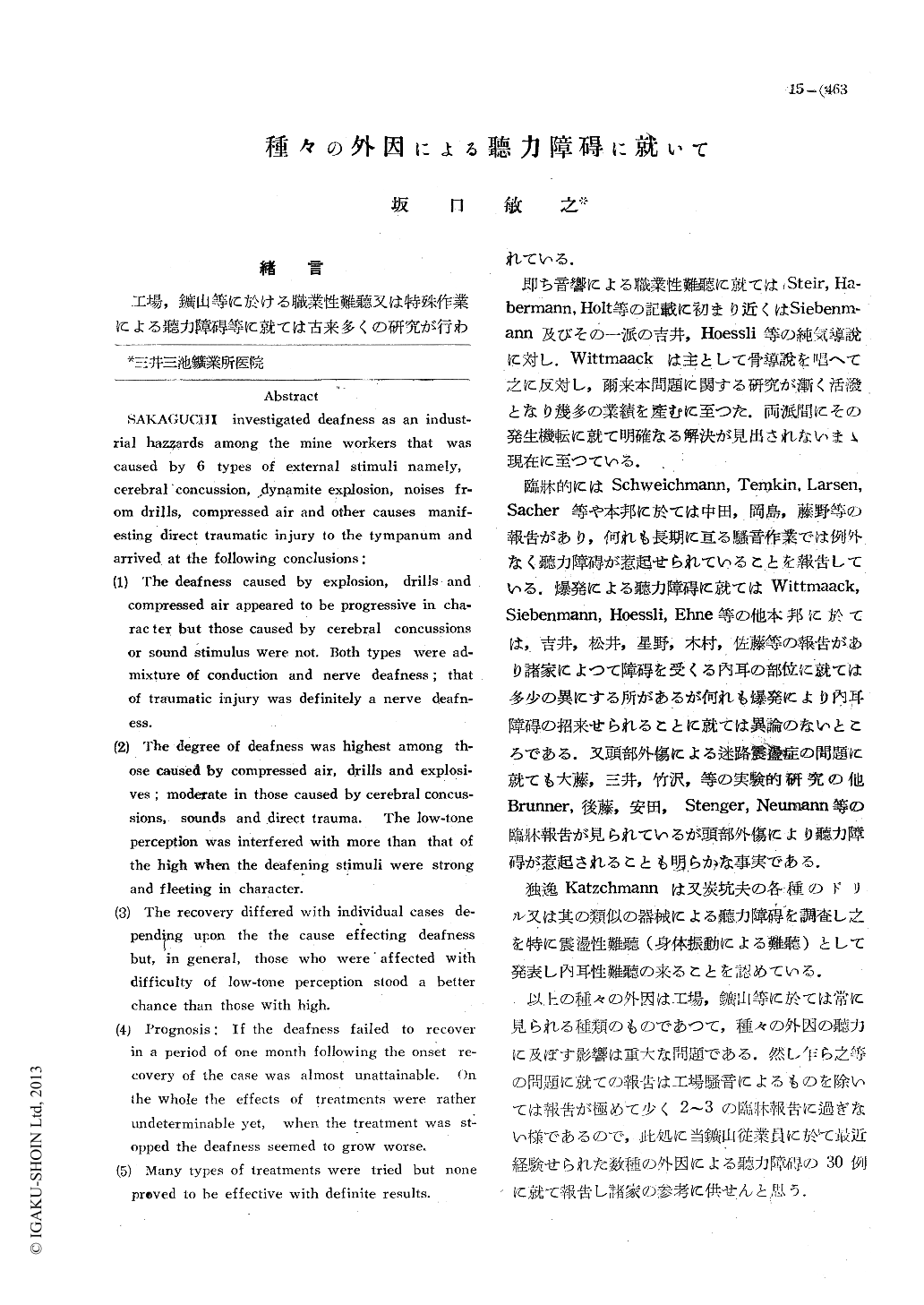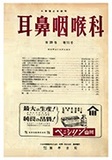- 有料閲覧
- 文献概要
- 1ページ目
緒言
工場,鑛山等に於ける職業性難聽又は特殊作業による聽力障碍等に就ては古来多くの研究が行われている.
即ち音響による職業性難聽に就てはSteir,Habermann,Holt等の記載に初まり近くはSiebenmann及びその一派の吉井,Hoessli等の純気導説に対し.Wittmaackは主として骨導説を唱へて之に反対し,爾来本問題に関する研究が漸く活溌となり幾多の業績を産むに至つた.両派間にその発生機転に就て明確なる解決が見出されないまゝ現在に至つている.
SAKAGUCHI investigated deafness as an industrial hazzards among the mine workers that was caused by 6 types of external stimuli namely, cerebral concussion, dynamite explosion, noises from drills, compressed air and other causes manifesting direct traumatic injury to the tympanum and arrived at the following conclusions: (1) The deafness caused by explosion, drills and compressed air appeared to be progressive in charac ter but those caused by cerebral concussions or sound stimulus were not. Both types were admixture of conduction and nerve deafness; that of traumatic injury was definitely a nerve deafness.
(2) The degree of deafness was highest among those caused by compressed air, drills and explosives; moderate in those caused by cerebral concussions, sounds and direct trauma. The low-tone perception was interfered with more than that of the high when the deafening stimuli were strong and fleeting in character.
(3) The recovery differed with individual cases depending upon the the cause effecting deafness but, in general, those who were affected with difficulty of low-tone perception stood a better chance than those with high.
(4) Prognosis: If the deafness failed to recover in a period of one month following the onset recovery of the case was almost unattainable. On the whole the effects of treatments were rather undeterminable yet, when the treatment was stopped the deafness seemed to grow worse.
(5) Many types of treatments were tried but none proved to be effective with definite results.

Copyright © 1951, Igaku-Shoin Ltd. All rights reserved.


